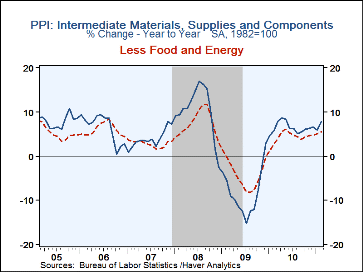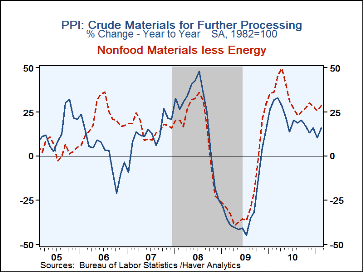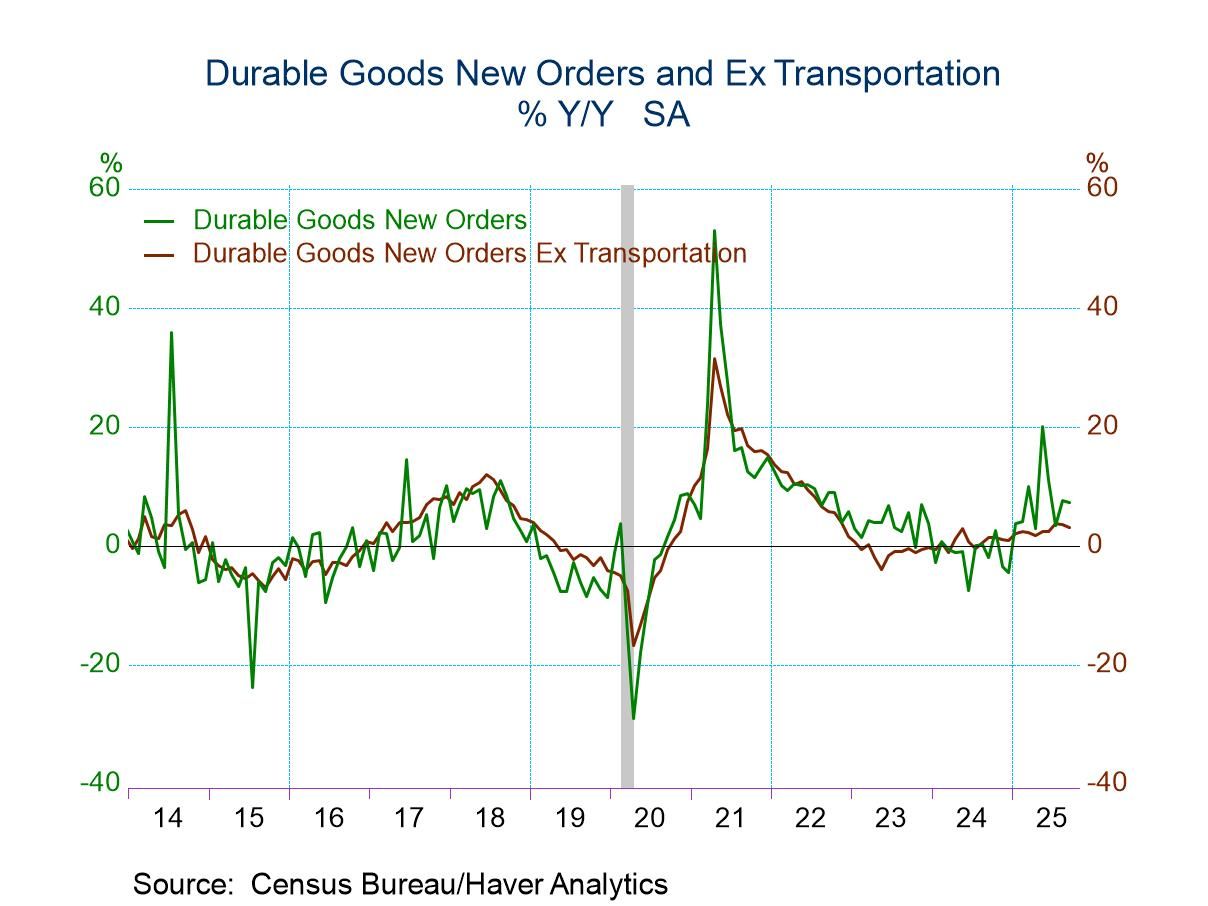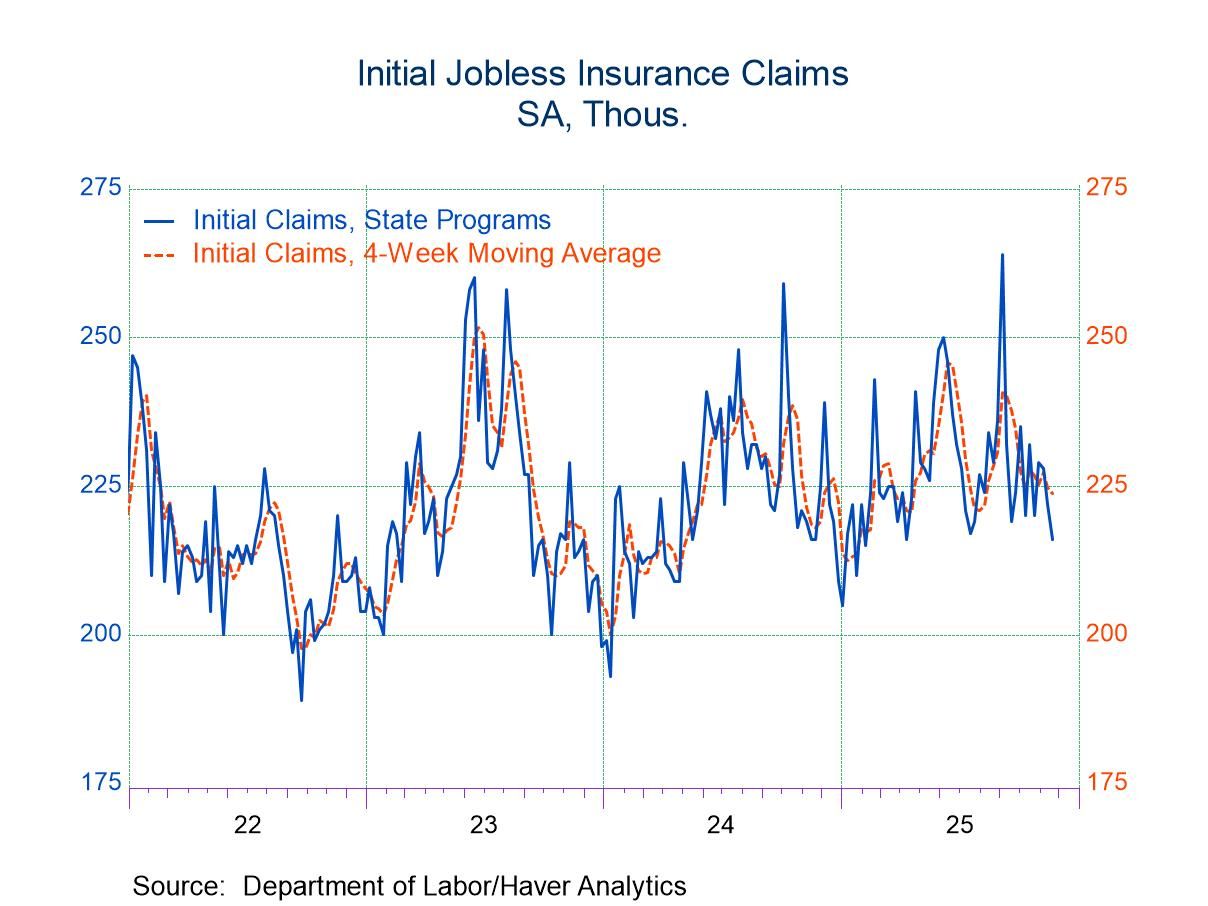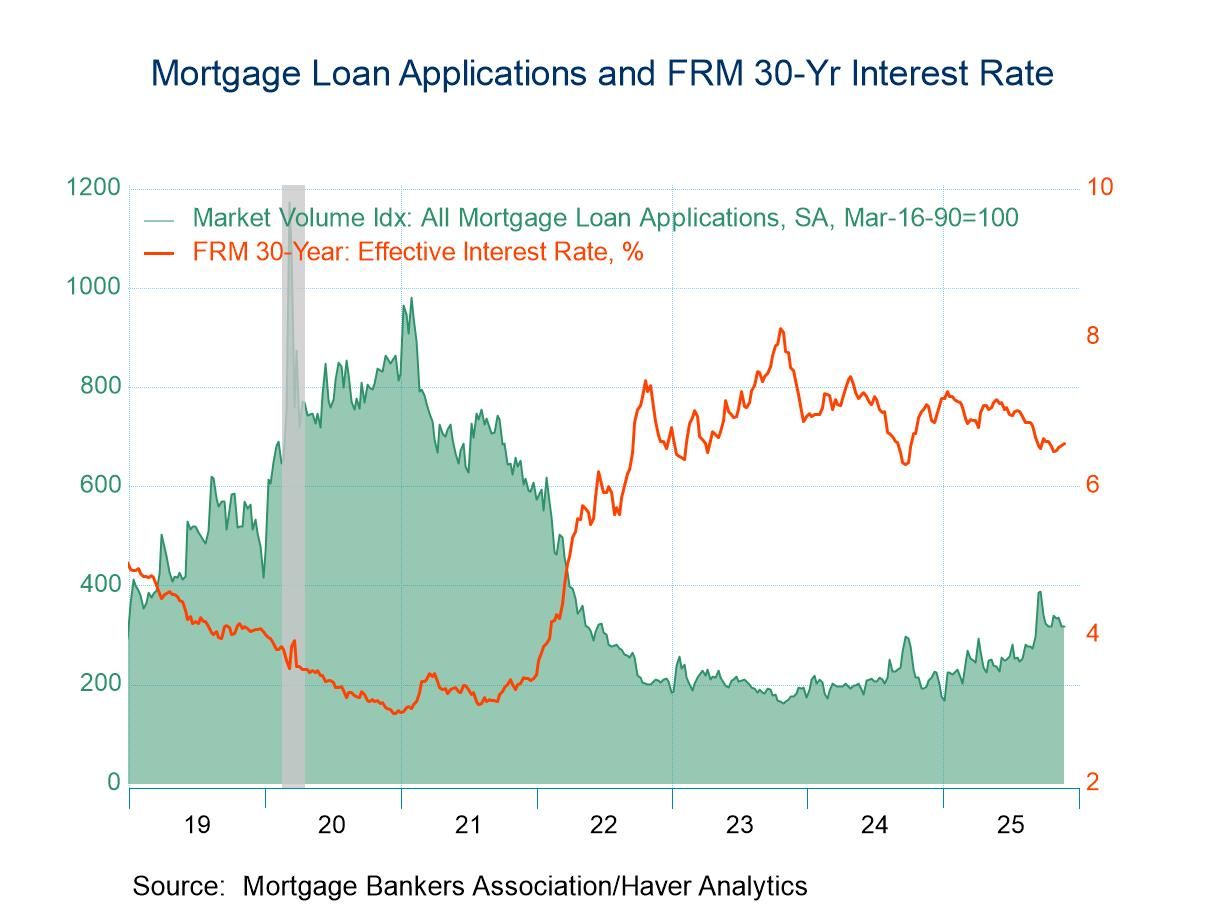 Global| Mar 16 2011
Global| Mar 16 2011U.S. PPI Surges While Downstream Pressures Build
by:Tom Moeller
|in:Economy in Brief
Summary
The U.S. Producer Price Index for finished goods jumped 1.6% last month and doubled its January increase. The latest increase was significantly greater than Consensus expectations for a 0.7% gain. Less food & energy, pricing pressures [...]
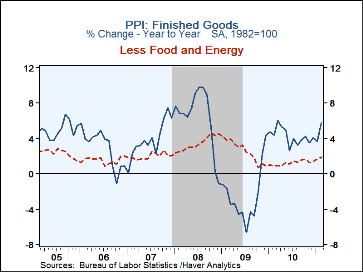 The U.S. Producer Price Index for finished goods jumped 1.6%
last month and doubled its January increase. The latest increase was
significantly greater than Consensus expectations for a 0.7% gain. Less food & energy,
pricing pressures eased. The 0.2% increase was less than half the January
increase and matched Consensus expectations.
The U.S. Producer Price Index for finished goods jumped 1.6%
last month and doubled its January increase. The latest increase was
significantly greater than Consensus expectations for a 0.7% gain. Less food & energy,
pricing pressures eased. The 0.2% increase was less than half the January
increase and matched Consensus expectations.
Energy prices again were strong and posted a 3.3% increase (15.3% y/y) as gasoline prices increased a not seasonally adjusted 2.4% (26.3% y/y). Since the late-2008 low, gasoline prices have more-than-doubled. Home heating oil prices also were strong, posting a 7.0% (37.4% y/y) increase. Natural gas prices rose a lesser 2.3% (-2.3% y/y) and electricity prices rose 1.1% (4.6% y/y). Food prices also spiked by 3.9% (7.4% y/y). The strength owed to a nearly one-half surge in fresh fruit & vegetable costs (73.9% y/y) and a 7.6% jump (-3.9% y/y) in egg prices.
Finished consumer goods prices jumped 2.1% (7.5% y/y) with the gain in food & energy. Core prices rose 0.3% (2.6% y/y). Furniture prices rose 1.7% y/y but passenger car prices fell 1.7%. Men's apparel prices increased 3.1% y/y while women's clothing prices rose 0.3%. Capital goods prices inched up 0.1% last month and by 0.8% y/y.
Intermediate goods prices jumped 2.0% as energy prices surged 4.3% (15.7% y/y). Food prices also strengthened by 2.6% (9.9% y/y). Core-intermediate prices remained firm and rose another 1.1% (5.4% y/y). The 3.4% m/m increase in crude goods prices also roughly matched the January gain as energy prices rose 0.9% (0.0% y/y) and food prices increased 6.7% (9.1% y/y). Continuing to reflect strength in the industrial sector, core crude prices posted a 2.3% increase (28.4% y/y) paced by higher iron & steel scrap (32.3% y/y), aluminum base scrap (27.6% y/y) and copper scrap (25.8% y/y) prices.
The PPI data are contained in Haver's USECON database with further detail in PPI and PPIR.
Inflation Dynamics and the New Keynesian Phillips Curve from the Federal Reserve Bank of Philadelphia can be found here.
| Producer Price Index (%) | Feb | Jan | Dec | Feb Y/Y | 2010 | 2009 | 2008 |
|---|---|---|---|---|---|---|---|
| Finished Goods | 1.6 | 0.8 | 0.9 | 5.8 | 4.2 | -2.5 | 6.4 |
| Energy | 3.3 | 1.8 | 2.8 | 15.3 | 13.8 | -17.7 | 14.1 |
| Food | 3.9 | 0.3 | 0.8 | 7.4 | 3.9 | -1.4 | 6.8 |
| Less Food & Energy | 0.2 | 0.5 | 0.2 | 1.9 | 1.2 | 2.5 | 3.4 |
| Intermediate Goods | 2.0 | 1.1 | 0.9 | 7.9 | 6.4 | -8.4 | 10.3 |
| Less Food & Energy | 1.1 | 1.0 | 0.4 | 5.4 | 4.3 | -4.2 | 7.4 |
| Crude Materials | 3.4 | 3.3 | 6.5 | 16.0 | 21.4 | -30.3 | 21.5 |
| Less Food & Energy | 2.3 | 4.0 | 3.5 | 28.4 | 32.6 | -23.4 | 14.7 |
Tom Moeller
AuthorMore in Author Profile »Prior to joining Haver Analytics in 2000, Mr. Moeller worked as the Economist at Chancellor Capital Management from 1985 to 1999. There, he developed comprehensive economic forecasts and interpreted economic data for equity and fixed income portfolio managers. Also at Chancellor, Mr. Moeller worked as an equity analyst and was responsible for researching and rating companies in the economically sensitive automobile and housing industries for investment in Chancellor’s equity portfolio. Prior to joining Chancellor, Mr. Moeller was an Economist at Citibank from 1979 to 1984. He also analyzed pricing behavior in the metals industry for the Council on Wage and Price Stability in Washington, D.C. In 1999, Mr. Moeller received the award for most accurate forecast from the Forecasters' Club of New York. From 1990 to 1992 he was President of the New York Association for Business Economists. Mr. Moeller earned an M.B.A. in Finance from Fordham University, where he graduated in 1987. He holds a Bachelor of Arts in Economics from George Washington University.


